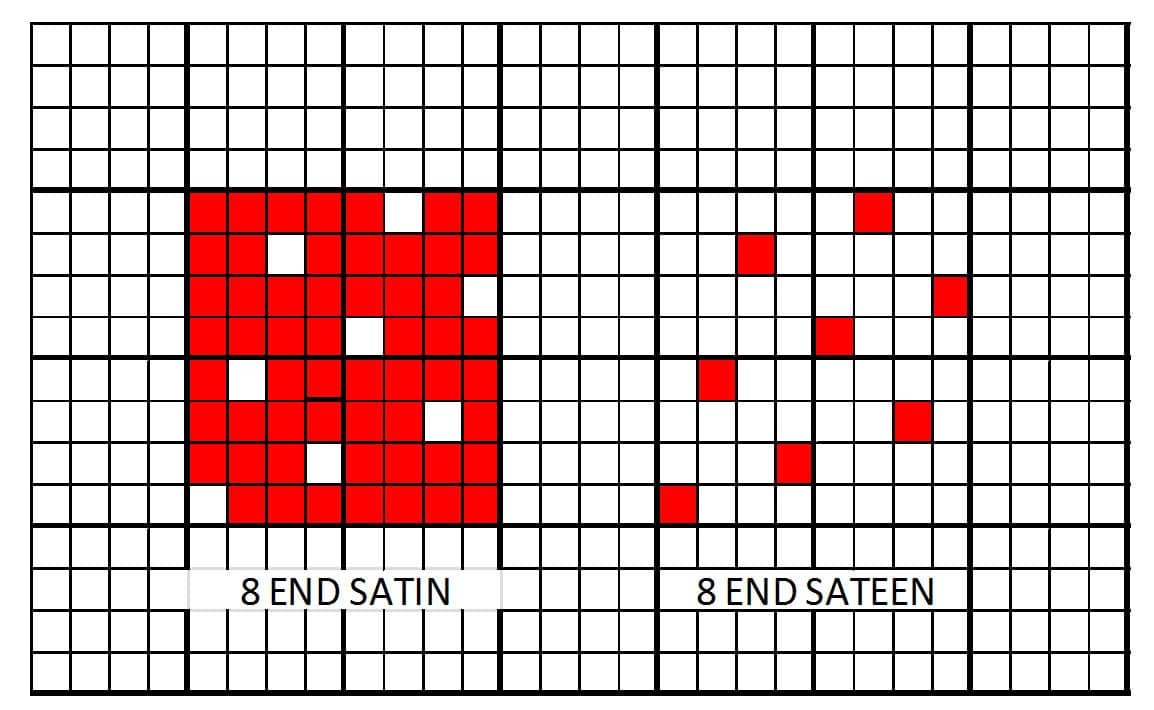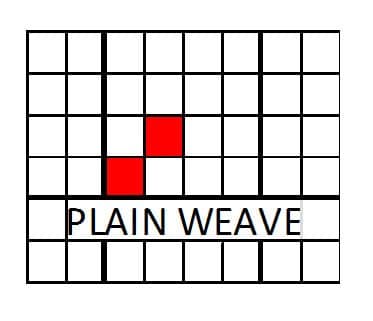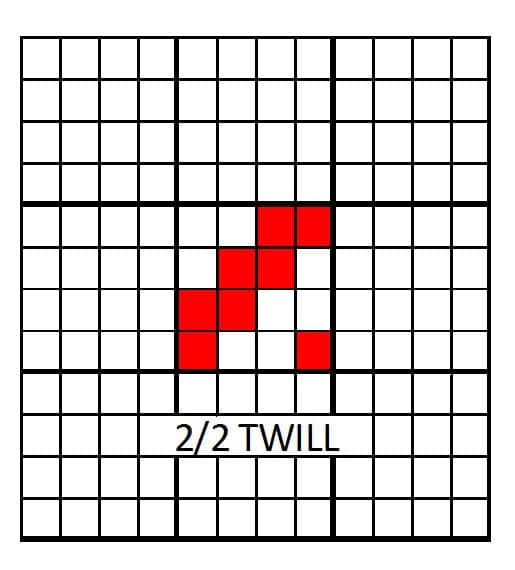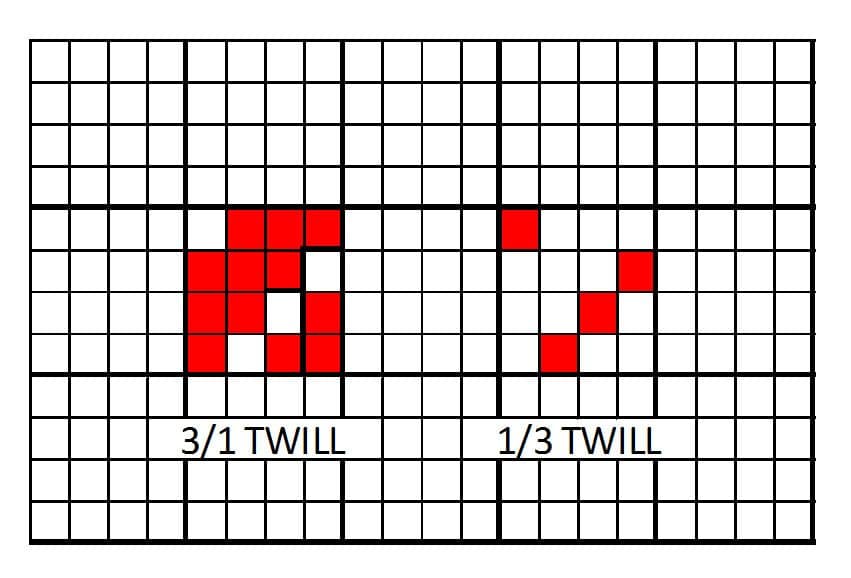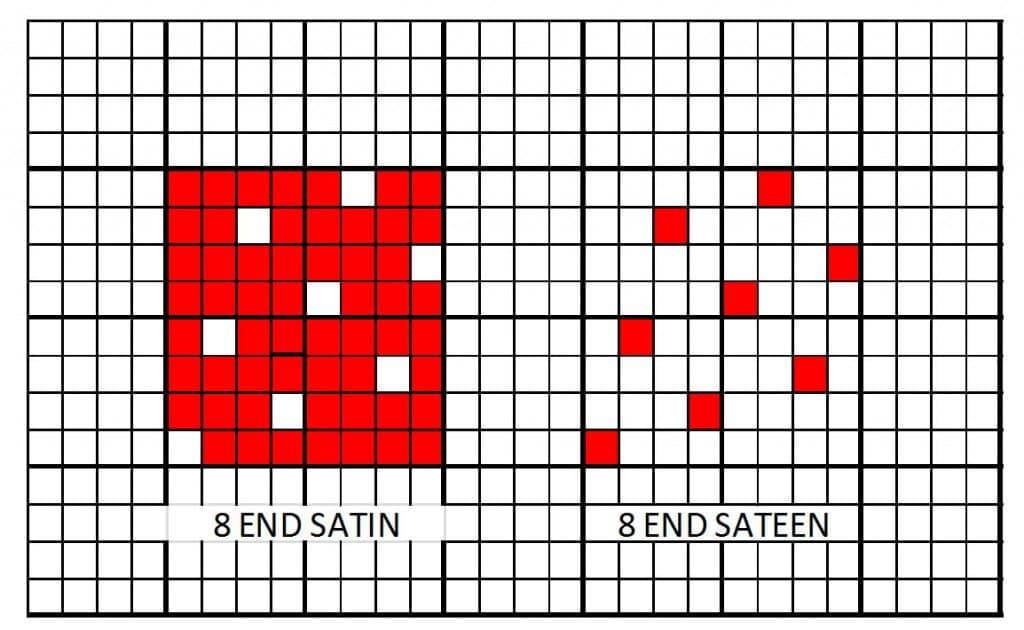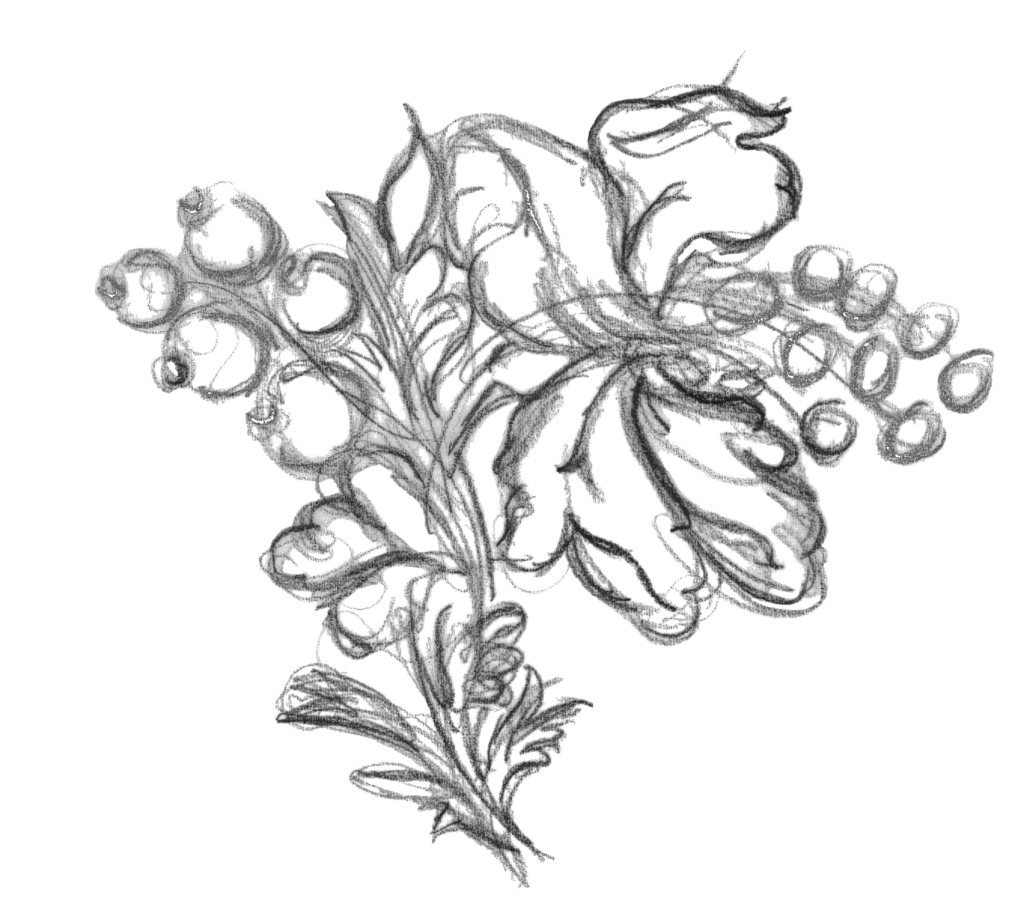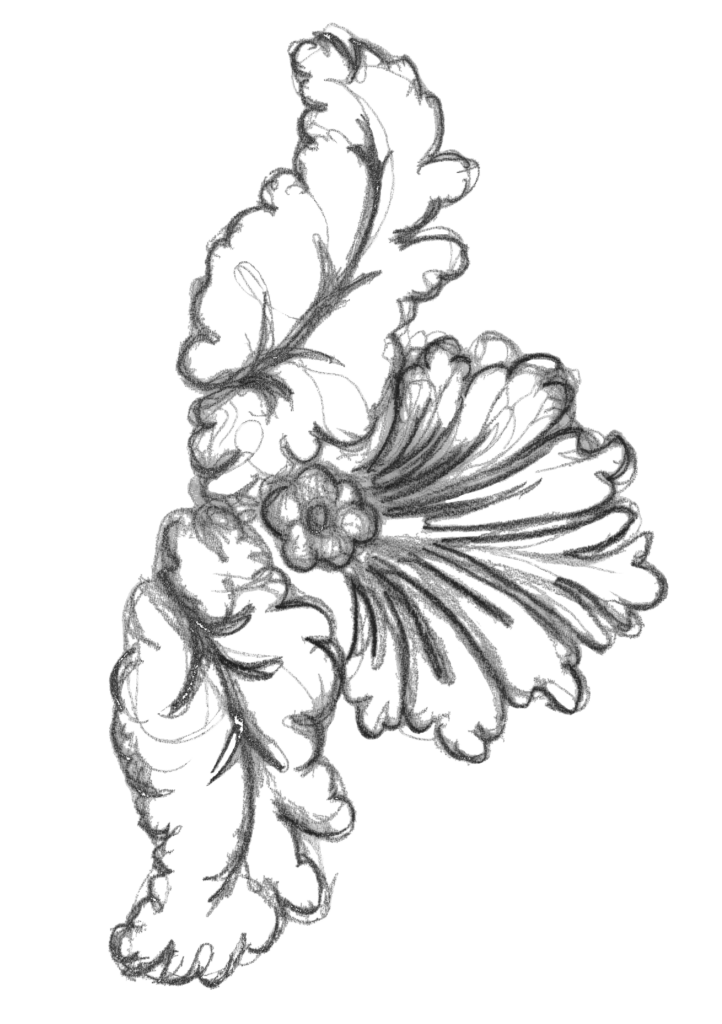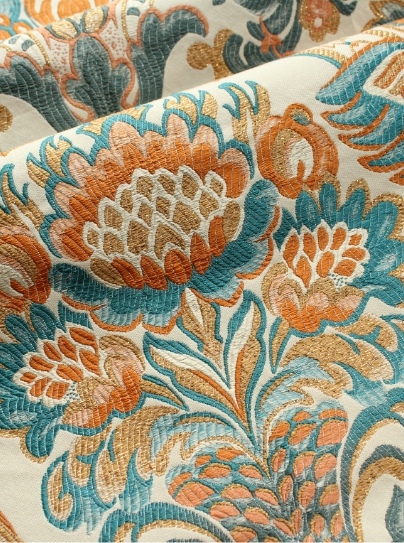The foundations of making woven fabric structure have been set for thousands of years. The basic principle is that there must be two sets of threads to interlace and create the structure.
The warp threads (called ends) run down the length of the cloth, with the weft threads (picks) being inserted across the width of the cloth.
Structure is formed by lifting warp ends vertically over weft picks and by floating weft picks horizontally over warp ends. With each weave you are deciding how much of the warp and how much weft you want to show on the face of the cloth. The way in which we interweave the warp and weft has changed throughout the centuries. The loom is the tool used to create woven fabric and has evolved to make the weavers’ task less laborious and ultimately make the process quicker.
Woven fabric can be categorised in one of two ways; simple structures and complex structures.
Simple Structures
To view examples of some woven fabric that uses simple structures see our plain fabrics page.
Plain weave and variation;
Plain weave is the simplest of all woven fabric structures, interlacing in a one under one over formation and repeats over two warp ends and two weft picks. This gives the fabric balance with equal amounts of horizontal and vertical threads showing. It is completely reversible and a very sound structure. Although the simplest of weaves it is known as the hardest to perfect. All threads are interchanging and interacting with one another at once giving more room for error. For those interested in a little more detail, we have included peg plans of each of the structures discussed.
An historic example of a plain weave fabric is Lustring. A good example of which can be seen on the Speaker’s State Bed at The Palace of Westminster.
Variations of the plain weave have been created to enable a different aesthetic in the cloth but also to elevate some pressure on the threads allowing smoother weaving. This is expanded on in our article Super Shiny Silks.
Twill
Twill weaves are noted for the diagonal line they create in the cloth and vary depending upon how much of the warp or weft you want shown in the cloth. Twills are prefixed with a number denoting the lifts and floats. Some common twills would be 2/2 twill and 3/1 twill. The 2/2 twill is the most balanced, with equal amounts of warp and weft and is the traditional weave used in the production of Scottish tartan.
A 3/1 twill is known to many in the form of denim (derived from serge de Nîme) and shows more warp on the face of the cloth and more weft on the reverse.
Satin
A desirable fashion and interior structure for its sheen; satin is used to give a smooth and luxurious appearance to silk fabric particularly. Satin is a warp faced weave, whilst its counterpart sateen is the weft faced version and so they are the perfect reverse of one another. Common satin/sateen is an 8 end or 5 end weave. The 8 end weave gives a shinier appearance as 7 out of 8 warp ends are being lifted at one time.
In a 5 end satin you have a slightly more subdued lustre with 4 out of 5 warp ends being lifted together.
A fine example of a 5 end satin can be seen in The Most Excellent Order of the British Empire Robe, one of The Orders of Chivalry Robes
Satin and sateen are ordinarily used in conventional damask structures.
Complex Structures
From tissue, to lampas to brocatelle to velvet, many of the Jacquard fabrics we produce can be considered complex structures, which will discuss soon.
In the mean time, to find out more about the invention of the Jacquard and how this revolutionised weaving complex structure read our article Jacquard’s Weaving Revolution
[list]
[list_item icon=”ss-link”]Interested in more news articles? Then click here[/list_item]
[/list]
